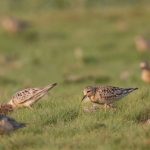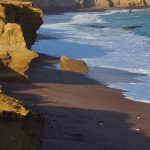A group of 40 people lifted their heads to the shoreline at Blackie Spit to see a single Long-billed Curlew (Numenius americanus), an early returner from its interior breeding grounds. On the beach, families were setting up chairs and kids playing in the sand. A dog was chasing sticks inside a fenced area that was set aside specifically for dogs. In the parking lot, a temporary theatre was bustling with morning rehearsals. And the Long-billed Curlew braved it all, the sole shorebird on the beach.
Blackie Spit is on the southeastern corner of Boundary Baypart of the Fraser Estuary WHSRN site. With paths, easy access, and two dog parks (one in the water), this park is popular for many residents and out-of-town visitors. Our winged out-of-town friends tend to flock to this shoreline too, but these days it is typically too busy for feeding and roosting shorebirds. The day’s Long-billed Curlew was an exception. Black Oystercatchers (Haematopus bachmani) have attempted to nest in recent years, but have not been successful.
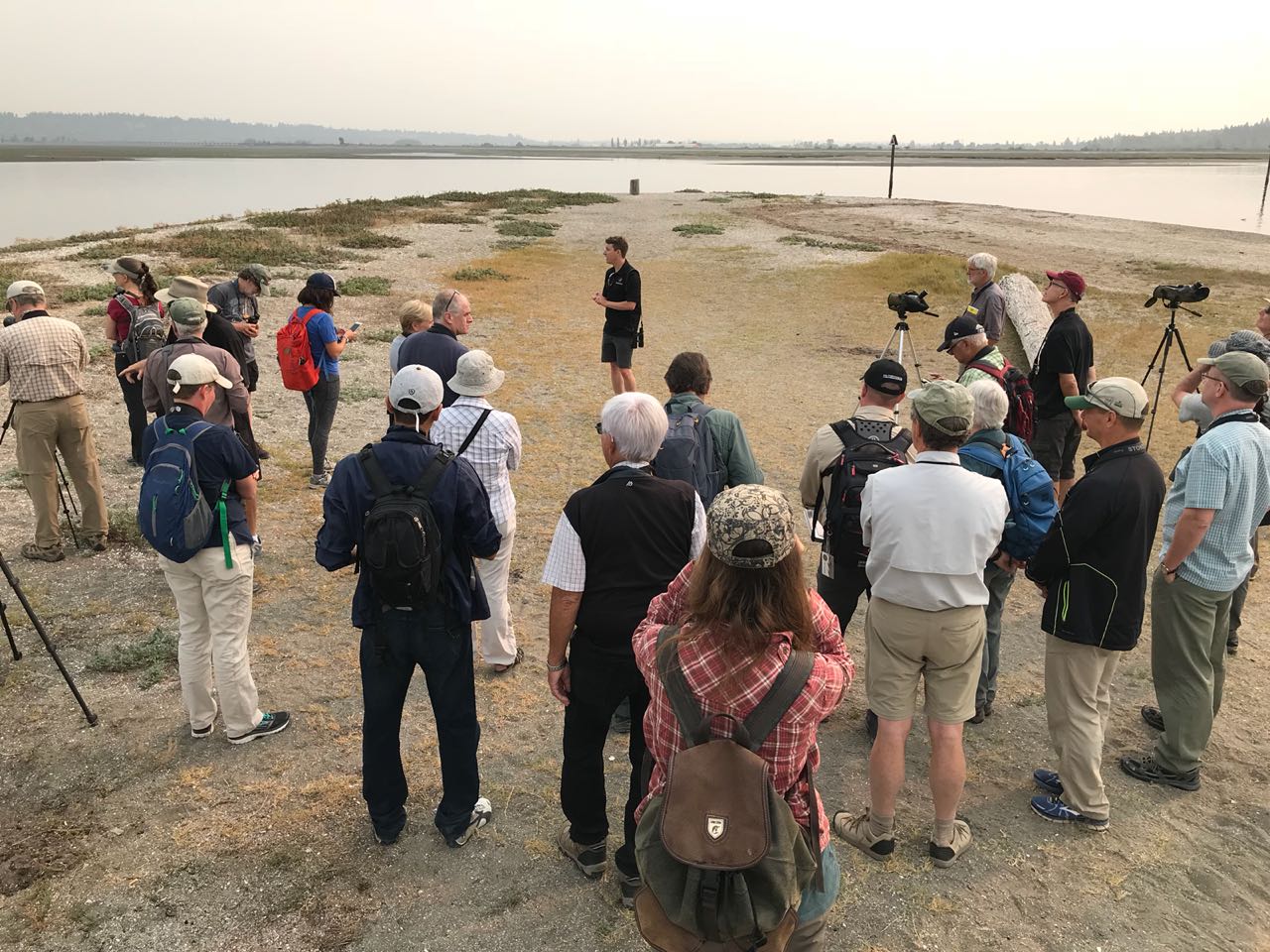
Regional stakeholders gather at Blackie Spit to learn more about the area. Photo: Diego Luna Quevedo
Blackie Spit is just one of several areas that were highlighted during a recent tour of the Fraser Estuary led by Bird Studies Canada. The Fraser Estuary became a WHSRN site of Hemispheric Importance in 2005 for hosting over 500,000 Western Sandpipers (Calidris mauri). At least 90% of all Western Sandpipers will use the Fraser Estuary at some point in their life cycle. The three main areas of the site, Roberts Bank, Boundary Bay, and Sturgeon Bank, are also host to several other species of shorebirds such as Dunlin (Calidris alpina) and Black-bellied Plovers (Pluvialis squatarola).
But Fraser Estuary area is not just for birds. Nearby communities enjoy relaxing along the wetlands, appreciating the open space and respite from urban life. The Fraser estuary is the ancestral home of the Coast Salish people and as unceded territory it continues to be inhabited by a number of First Nations communities across the delta. The estuary is also host to an important salmon fishery, along with other fisheries. The estuary and its wetlands serve as the nursery for salmon smolt while they are adapting from freshwater and saltwater.
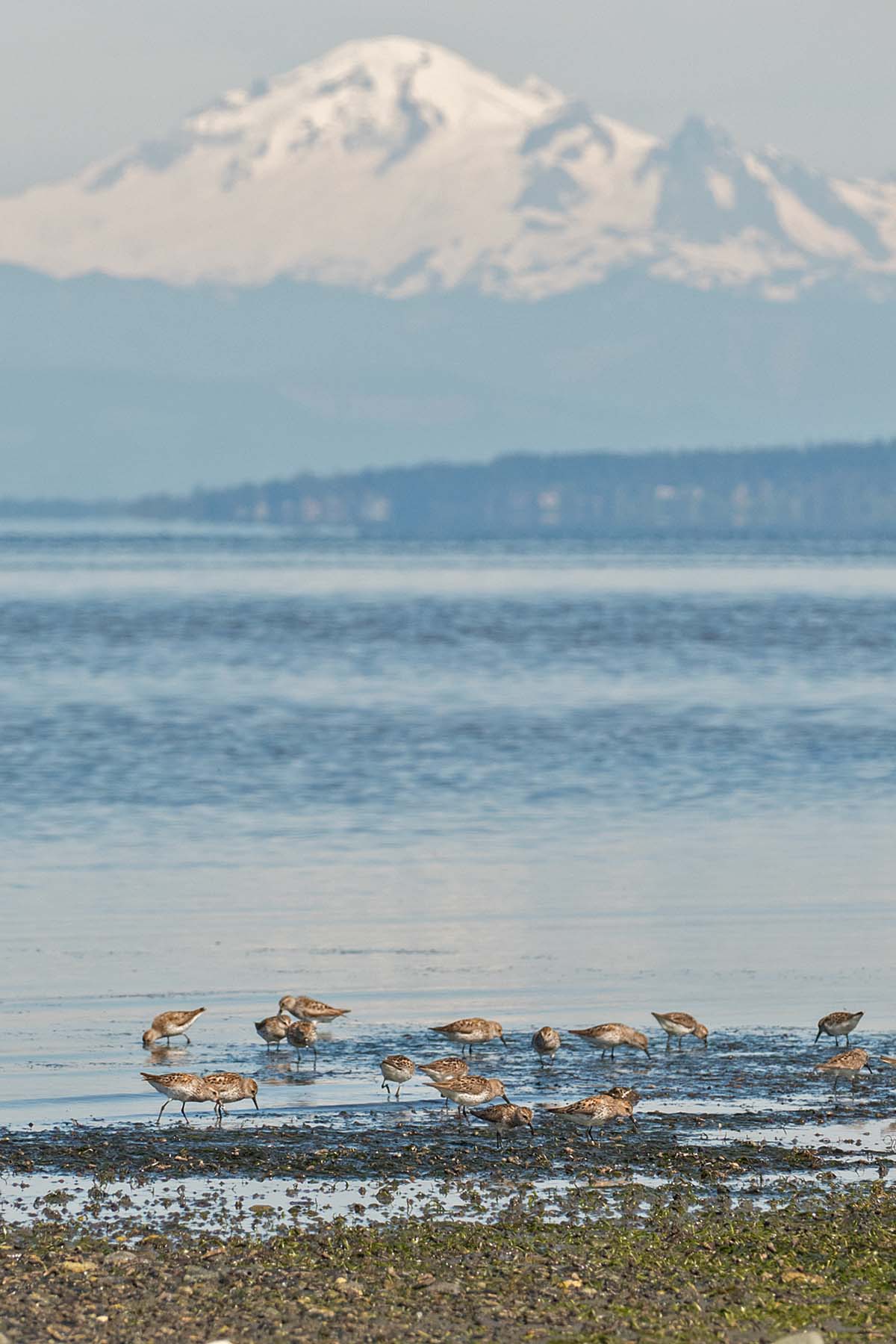
Western Sandpipers beneath Mt. Baker. Photo: Pete Davidson.
Both urban and rural, this site in British Columbia, Canada is rapidly changing, threatening the health of the estuary and the communities and wildlife that rely on it. Bird Studies Canada led this tour of the area with regional stakeholders to raise awareness of the threats facing the estuary and to build a dialog amongst those collaborating to conserve the health and function of the estuary.
Other areas that were highlighted included popular walking trails along northern Boundary Bay, Brunswick Point, local farms, and Iona Beach Regional Park. In addition to recreational disturbance, the tour highlighted other threats, including increased development – especially the conversion of in-soil agriculture to greenhouses or hard infrastructure, unexplained die-off coastal wetlands, and the invasive Spartina cordgrass that chokes out healthy wetlands and takes over mudflats. Loss of wetlands, mudflats, and agriculture lands means fewer places for birds to roost and feed. On top of this is the ever-looming threat that faces many WHSRN sites: climate change, which brings unknown impacts from rising tides, changes in freshwater flows from the mountains, and changes in shoreline habitat.
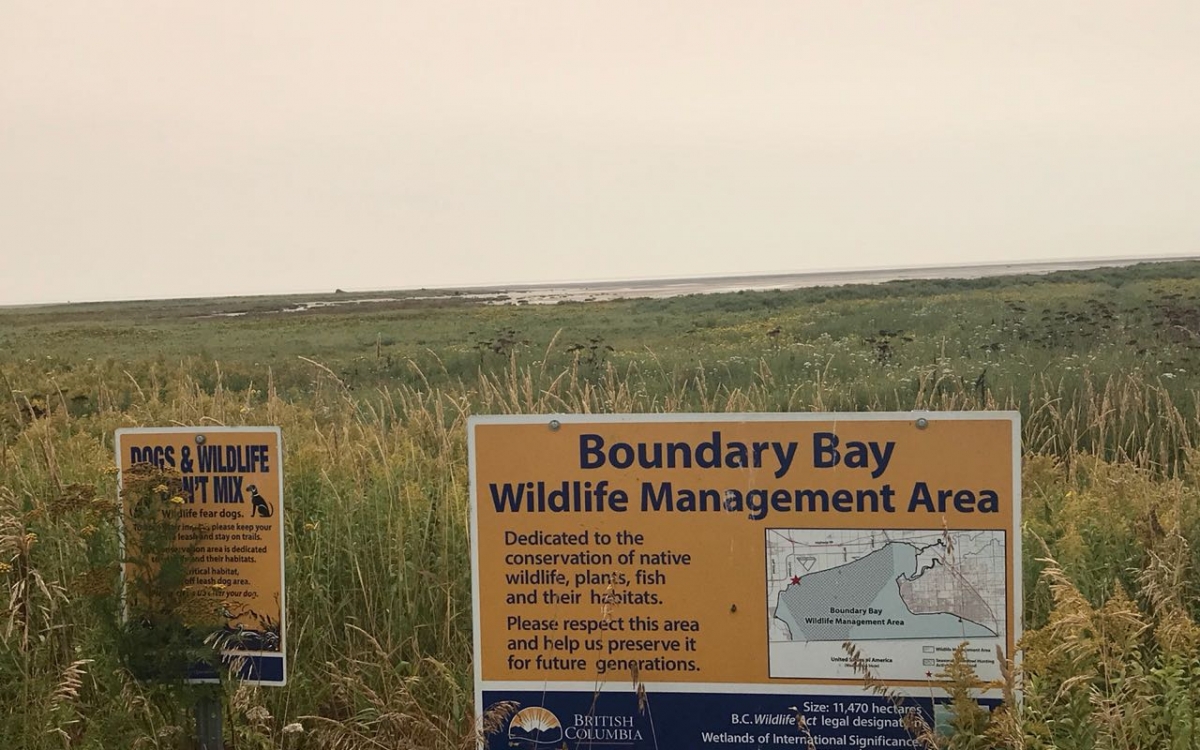
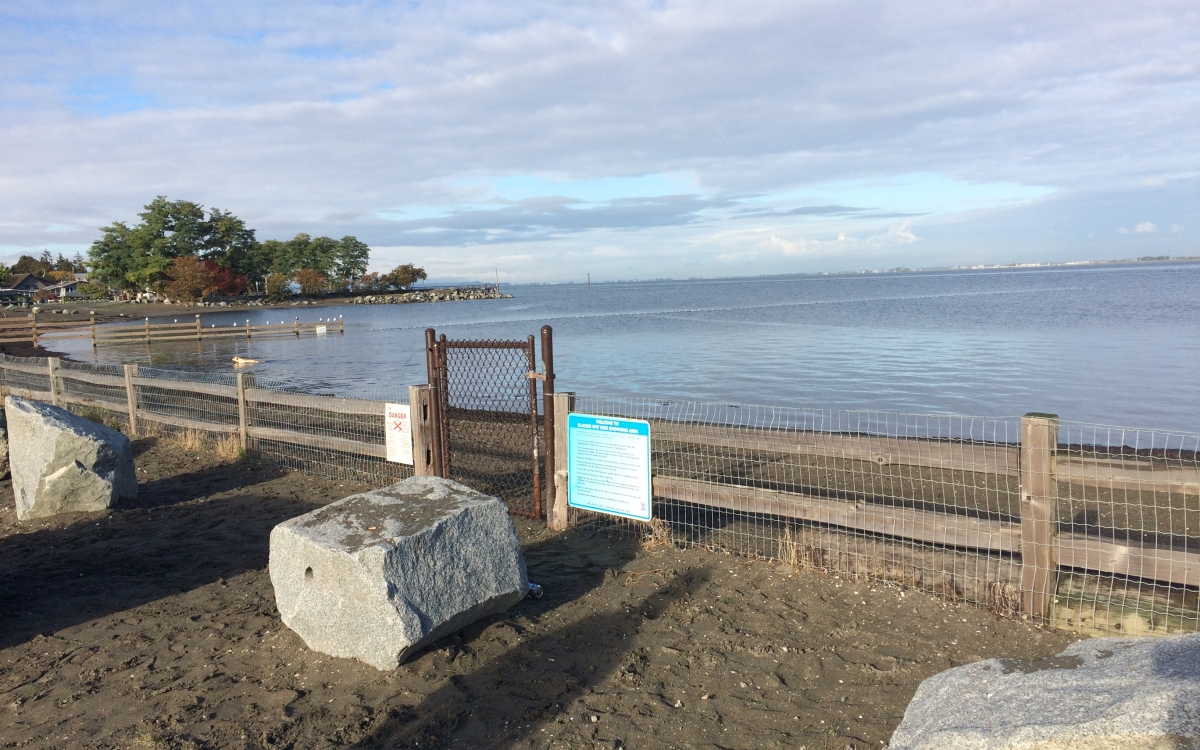
Left: The dikes along the Boundary Bay wetlands are popular for dog walkers, runners, and birdwatchers. Educational signage reminds visitors to share the space with wildlife. Photo: Diego Luna Quevedo. Right: At Blackie Spit, there is an area of the beach set aside for dogs only, in order to keep them away from other areas. Photo: Laura Chamberlin.
One of the greatest threats facing the Fraser Estuary is the widespread expansion of western gateway trade infrastructure, exemplified by the Roberts Bank Terminal 2 project. The proposed port expansion would double the size of the existing artificial island and causeway, which already holds Canada’s largest shipping container facility. In this same area are mudflats which produce large amounts of biofilm, a critical food source for Western Sandpipers found more extensively on the Roberts Bank mudflats than most other areas of the estuary. The proposed terminal could alter the flow of salt and freshwater across these mudflats, with as yet unknown impacts on biofilm and on the world’s Western Sandpipers. The Roberts Bank port expansion is currently in an open public comment period as part of the environmental assessment process.
Protecting the Fraser Estuary is critical for shorebirds, this we know. It is a lynchpin in the Pacific Flyway. But it is equally important to the quality of life of the nearby communities that depend on it for food, heritage, recreation, salmon and other fisheries, and open space. A road map for the future is necessary and urgent to ensure that communities and wildlife will continue to share this estuary.
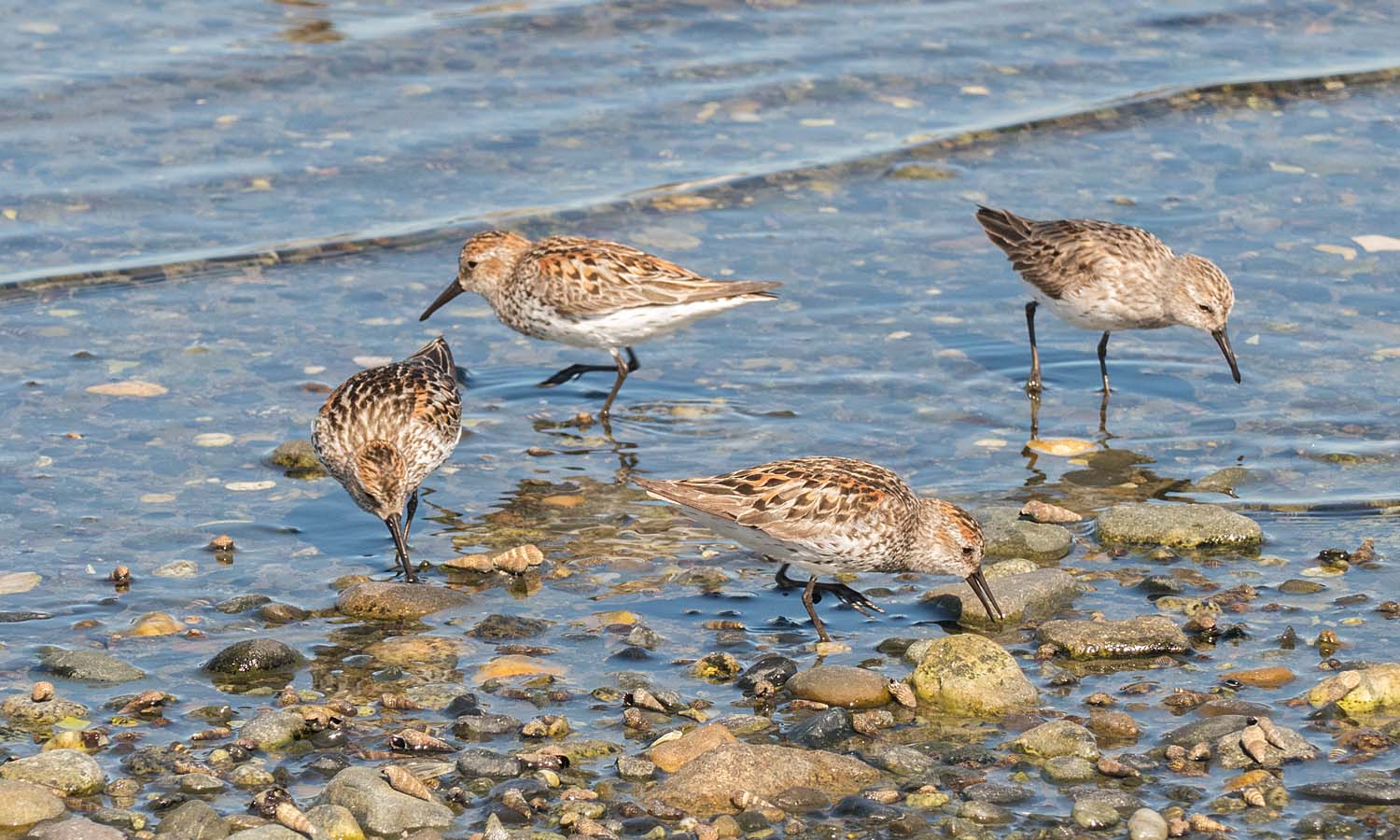
Western Sandpipers at Beach Grove in the Fraser Estuary. Photo: Pete Davidson
“When it comes to conservation in the complex environment that is the Fraser estuary, those that hope for a better future for the birds, nature and communities are sharing knowledge, time and resources to conserve the remaining bird habitat,” says James Casey, Manager of the Fraser Program with Bird Studies Canada. However, more help is needed. To learn how you can help contact James Casey at jcasey@birdscanada.org.
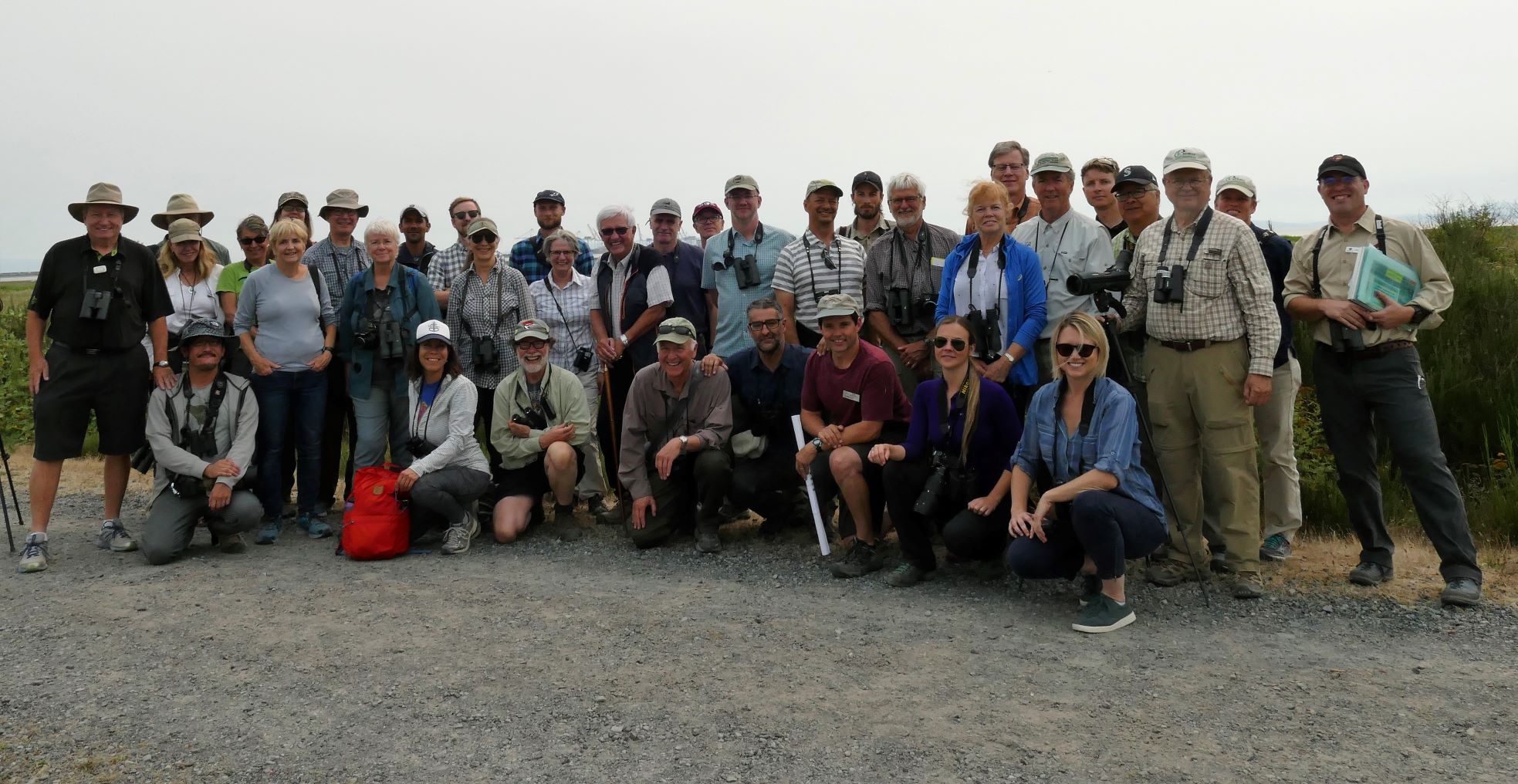
The group after Bird Studies Canada’s tour of the Fraser Estuary. Photo: Pete Davidson





